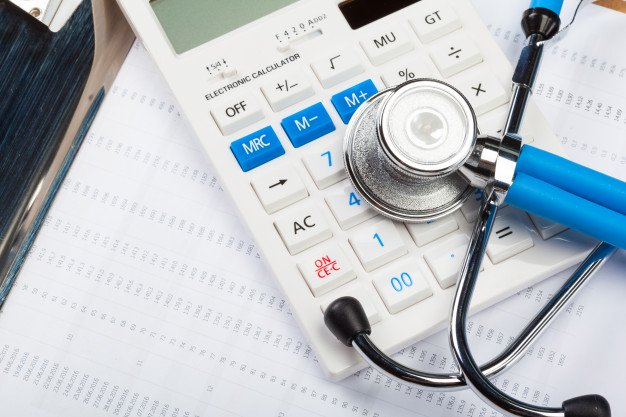 Health care stethoscope and calculator." width="626" height="417" />
Health care stethoscope and calculator." width="626" height="417" /> Health care stethoscope and calculator." width="626" height="417" />
Health care stethoscope and calculator." width="626" height="417" />
 Health care stethoscope and calculator." width="626" height="417" />
Health care stethoscope and calculator." width="626" height="417" />
As more patients opt for High Deductible Health Plans (HDHPs), providers are seeing a rise in patient responsibility balances.
This is a problem for providers because instead of relying on the insurance company for reimbursements, they are reliant on the patient to sustain their practice revenue. It is important that providers find ways to collect on these balances in order to generate revenue. What exactly is a patient responsibility balance and how can providers improve their collection of these payments?
Understanding and accurately determining patient responsibility is crucial for optimizing your medical billing process. By collecting payments upfront, healthcare providers can reduce financial risk, improve cash flow, and enhance patient satisfaction. In this guide, we’ll explore actionable steps to help your practice streamline patient payment collection.
Patient responsibility refers to the portion of a medical bill that the patient is required to pay out-of-pocket, rather than their insurance provider covering the cost. This amount can vary significantly depending on the patient’s insurance plan.
Increasingly, patients are opting for HDHPs, often under the assumption that they won’t need much medical care throughout the year. However, when they do require more medical attention than anticipated, they may find themselves with unexpectedly high medical expenses.
Understanding patient responsibility is crucial for both healthcare providers and patients. Providers must communicate these financial obligations clearly to ensure timely and complete payment, while patients should be fully informed of their potential costs to avoid surprises.

Determining patient responsibility is straightforward when you have the right tools at your disposal. Modern medical billing software equipped with a prior authorization tool and a patient cost estimator allows providers to quickly and accurately determine a patient’s financial responsibility for their services.
In the past, providers often had to wait until a claim was denied or spend considerable time on the phone with insurance companies to estimate what the patient might owe after their visit. These time-consuming methods not only delayed billing but also left patients uncertain about their financial obligations.
With advanced medical billing software, you can calculate a patient’s out-of-pocket costs in real time, right at the point of care. This means you can inform patients of their exact responsibilities before they leave the office, leading to fewer billing surprises and improved patient satisfaction.
Whether it is a past due payment, or your patient is still in the office, the utilization of RCM services can help you collect more on those patient responsibility balances.
In today’s age, patients need to be able to pay with a credit card or they will not likely pay at all. An integrated software solution can help your front-line staff process credit cards from the front desk, increasing the number of patient payments you collect in the office. Integrated software can also make it possible for your patients to process credit card payments through their patient portal. Your best chance at collecting a payment from a patient who is ready to pay is via credit card processing.
By outsourcing difficult collections, you hand over time-consuming patient responsibility balances to billing experts. Your RCM services vendor can help work with your patients, offering them the empathy and confidence they need to pay on their medical expenses. This will free up the time of your staff to work on more patient critical tasks.
The quickest way to make sure you get your payment is to partner with an RCM services vendor who can effectively manage your claims and denials. With the right vendor, your practice can achieve 99% clean claims and grow your revenue. Even though you cannot always keep patient responsibility balances from happening, maximizing your clean claims will make sure you are optimizing your reimbursements from payers.
In the ever-evolving landscape of healthcare, the surge in High Deductible Health Plans (HDHPs) has placed a spotlight on patient responsibility balances, presenting a significant challenge for healthcare providers. As patients bear a larger portion of their medical expenses, providers find themselves in a precarious position, relying on patient payments to sustain their revenue streams. Understanding and effectively managing patient responsibility balances have become paramount for the financial health of medical practices.
Ready to streamline your payment collection process? Schedule a free demo of our billing software today and discover how CollaborateMD can help your practice increase revenue and improve patient satisfaction.